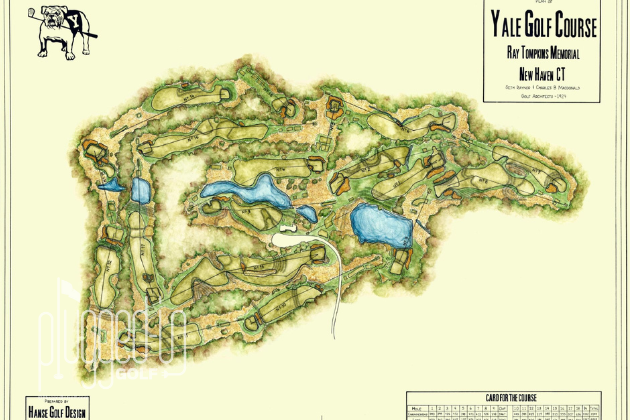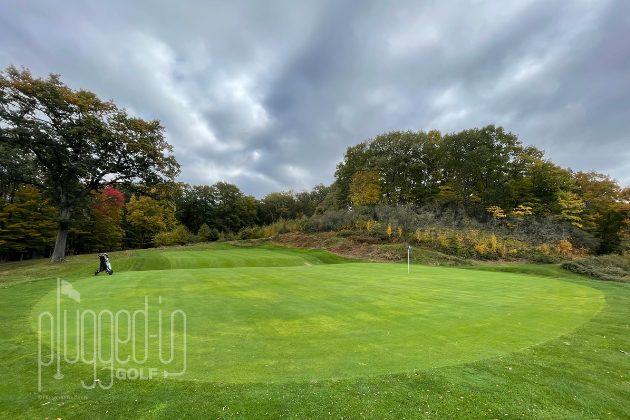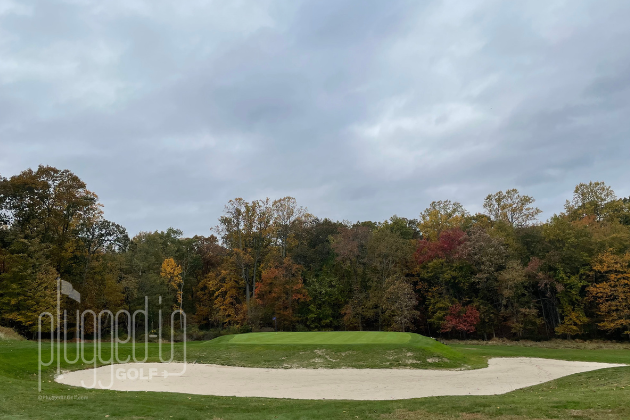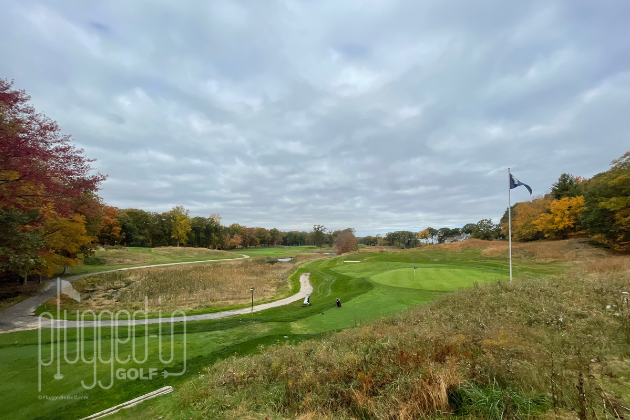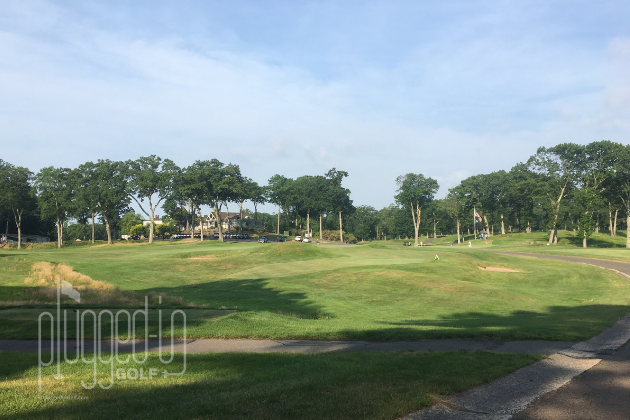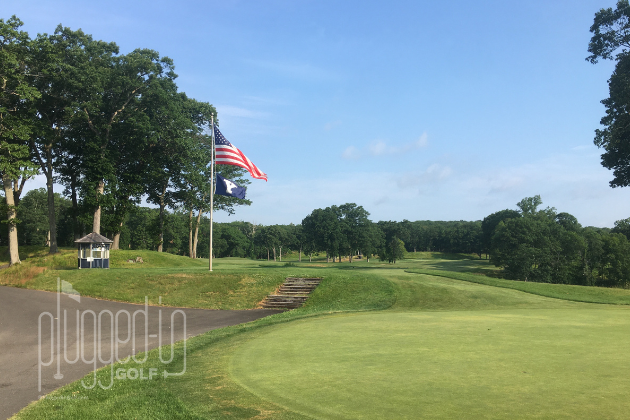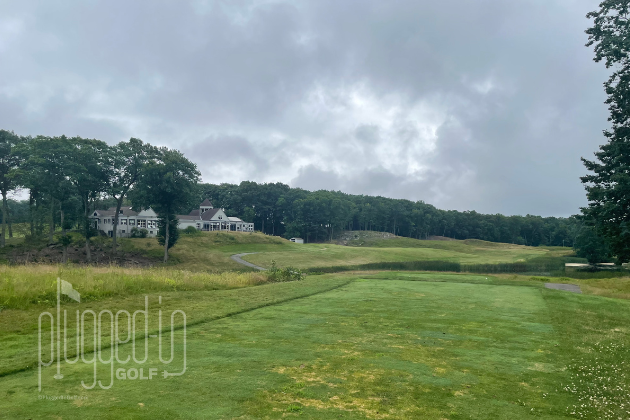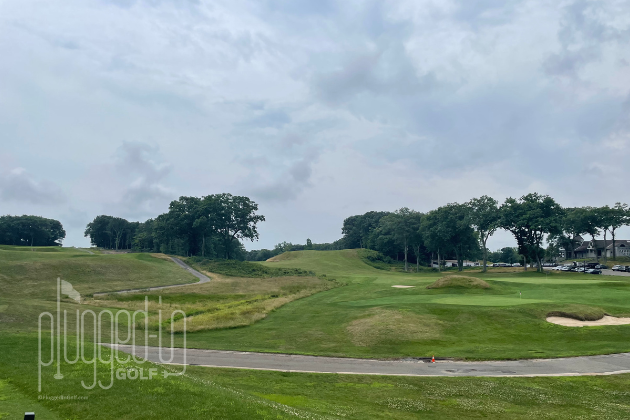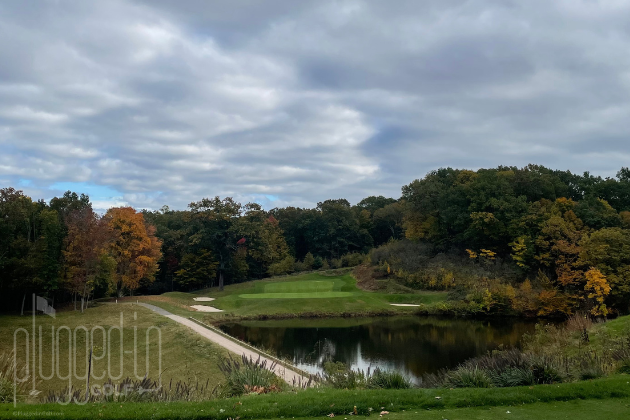50 Words or Less
Decorated golf course designer Gil Hanse has been tapped to restore the famed Yale Golf Course in New Haven, Connecticut. The $25 million project began with the course closure in September of 2023. The goal is restoring the course to its original design as well as adding length to keep up with the modern game.
History of Yale Golf Course
Back in the late 1800s, a Yale alumnus by the name of George Adee was involved with Yale Golf and had visions of bringing a golf course to the campus. He sought out the Yale Athletic Association after his 1895 graduation, asking them to consider a plan to build a golf course for Yale in Orange, Connecticut. He chose this spot as it was just across the street from Race Brook Country Club which was the home course of the Yale Golf Team at that time.
The more George thought about his plan, the more he realized this land would still be a good distance from campus, so he looked for a closer location. That’s when he turned his focus to a unique but heavily wooded piece of land within the New Haven city limits. This 700+ acre property was owned by John Greist, a successful local businessman who passed away in 1916. While the property was still in the Greist family, they were pressured to sell it to developers. While a golf course would only need about 200 acres of this estate, it would require a large sum of money to purchase.
George knew of just the guy – Ray Tompkins. Ray Tompkins was a fellow Yale alumnus and three time national champion football player who had quite a successful career after graduating. Ray was a proponent of Yale athletics and even had a clause in his will that his million dollar estate would eventually be used to help build Yale athletic facilities once his wife passed. When Ray Tompkins passed in 1918, George Adee discovered his request and approached Yale to have Ray’s wife Sarah purchase and donate the Greist property to stimulate the Yale Athletic Association. Sarah quickly accepted the proposal and the entire 700+ acre land was purchased and donated.
Designing Yale Golf Course
After the Tompkins donated the property to Yale, a golf course committee was quickly formed. George Adee suggested his friend Charles Blair Macdonald design the course. At the time, Macdonald was at the end of his illustrious career and suggested Seth Raynor design the course. Macdonald offered to stay on as a consultant. The project required heavy construction and at one point needed more than double the amount of workers and double the allocated funds. Raynor exceeded the budget because of the amount of rock that was needed to be blasted out, a lot of which can still be seen on the course today. After completing the $400,000 course, Yale opened for play in 1926.
Yale Golf Course is recognized as one of the finest examples from the Raynor & MacDonald portfolio. Large greens with deep bunkers and wide, rolling fairways are the core of Yale’s strategic, penal character. Many of the holes are considered “template” designs which are often imitated in modern course architecture. Yale was not the first to explore template holes. Raynor took inspiration from European golf courses like St. Andrews to create the par four “Road Hole” 4th and the famous par three “Biarritz” 9th.
The Restoration Plan
Gil Hanse was tapped as the architect to lead the $25 million restoration project, and I recently spoke with the Yale Golf Course general manager Peter Palacios about some of the details of Hanse’s plan. “Permitting was, up to this point, the biggest task of this restoration project. As of mid-January 2024, everything has been conditionally approved,” Peter told us.
“The goal of this project is to restore the course to its original 1926 design by Seth Raynor and have it play like it did when it was built,” said Peter. This means not creating new angles or hole designs, but simply moving tee boxes straight back to add length. This will allow holes to play as they did in 1926. Peter said that “part of this project will also mean eliminating all changes that have been made in the past 100 years. We want the course to be restored to the Raynor design and not have any influence of modern architecture.”
In the proposed plan above, the red is the current course while the green is the proposed additions or changes which will lengthen the original 6,552 yard course to about 7,190 yards. One of the most significant changes will be moving the entry roadway to accommodate a massive expansion to the driving range. Once the course reopens, Peter says that “the practice range will be fully accessible to all players playing Yale Golf Course” which had been previously closed since the course went public in 2020. Peter also said that they plan to remain a public access, daily fee golf course once they reopen sometime in 2026.
Notable Hole Changes
Hole #1: Something that Peter mentioned in our discussion was the significant changes surrounding the par four first (above). The back tee will extend back almost to the parking lot which will create an intimidating forced carry of almost 240 yards. This will require moving the starter shack as well as some additional tree removal. The tree clearings will also allow you to see the famous 9th green.
Hole #3: The par four third hole (above) will see the most significant change in the pond that separates the tee boxes from the fairway. The plan is to dredge the pond to allow for more irrigation that will be the main water supply for the course. Many of the courses greens will be expanded as they have shrunk over time, and the third green will see one of the largest expansions. The plan is to double the green size and create a double punchbowl that will extend towards the pond on the right. This will allow for more pin positions and bring water more into play but will force the cart path to be rerouted to the left of the hole near the clubhouse.
Hole #6: The second most notable tee box is the back tee on hole number six. This tee will sit above and to the left of the fifth green which would have players hitting balls directly over the 5th green. Peter said they will likely monitor who is allowed to play these new and unique back tee boxes, similar to the back tees at Bethpage Black, as there is some potential risk for the everyday golfer playing from them.
Hole #10: I wanted to include the par four 10th for its unique viewing experience. The planned tree clearing along with the championship tees will allow players to turn around and watch approach shots into the par three 9th. This might be the one area I am most excited to spend time at when it reopens.
The Future for Yale
In my discussion with Peter, I asked him what the ultimate goals were for tournaments at Yale Golf Course. His answer? “There is no limit.” Peter said they have had informal discussions with the NCAA, PGA Tour, LPGA, and the USGA. The Yale Golf Course wants to open its doors to show the world what it has to offer championship golf.
I asked Peter what he thought could be the most plausible outcome in terms of hosting in the near future and he said they “want to host the NCAA nationals, the US Amateur, a Walker Cup, and more boldly – a Ryder Cup.” Peter and I also discussed that it was certainly possible to host any major tournament whether that’s a US Open, LPGA or PGA Tour stop. “Having the entire Yale campus, the Yale Bowl, downtown New Haven and other nearby Yale properties to shuttle spectators and necessary personnel to the course allows Yale to host just about any type of golf tournament. Upon the completion of this major restoration, we hope that this will allow us to bring major championship golf to the Yale Golf Course.”
Conclusion
The Yale Golf Course $25 million restoration is already underway and should bring the Seth Raynor design back to its former glory. Gil Hanse promises to deliver a course that mirrors what Raynor envisioned in 1926 while bringing Yale into the modern century for turf advancements, length, and challenge for years to come.
- Yale Golf Course Gets a Restoration - October 11, 2024
- The 2024 BMW Championship Recap - August 26, 2024
- The 2024 Olympic Golf Recap - August 4, 2024


